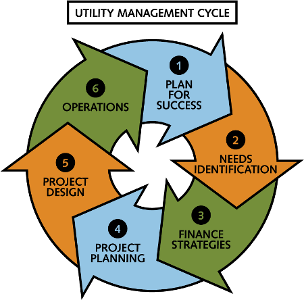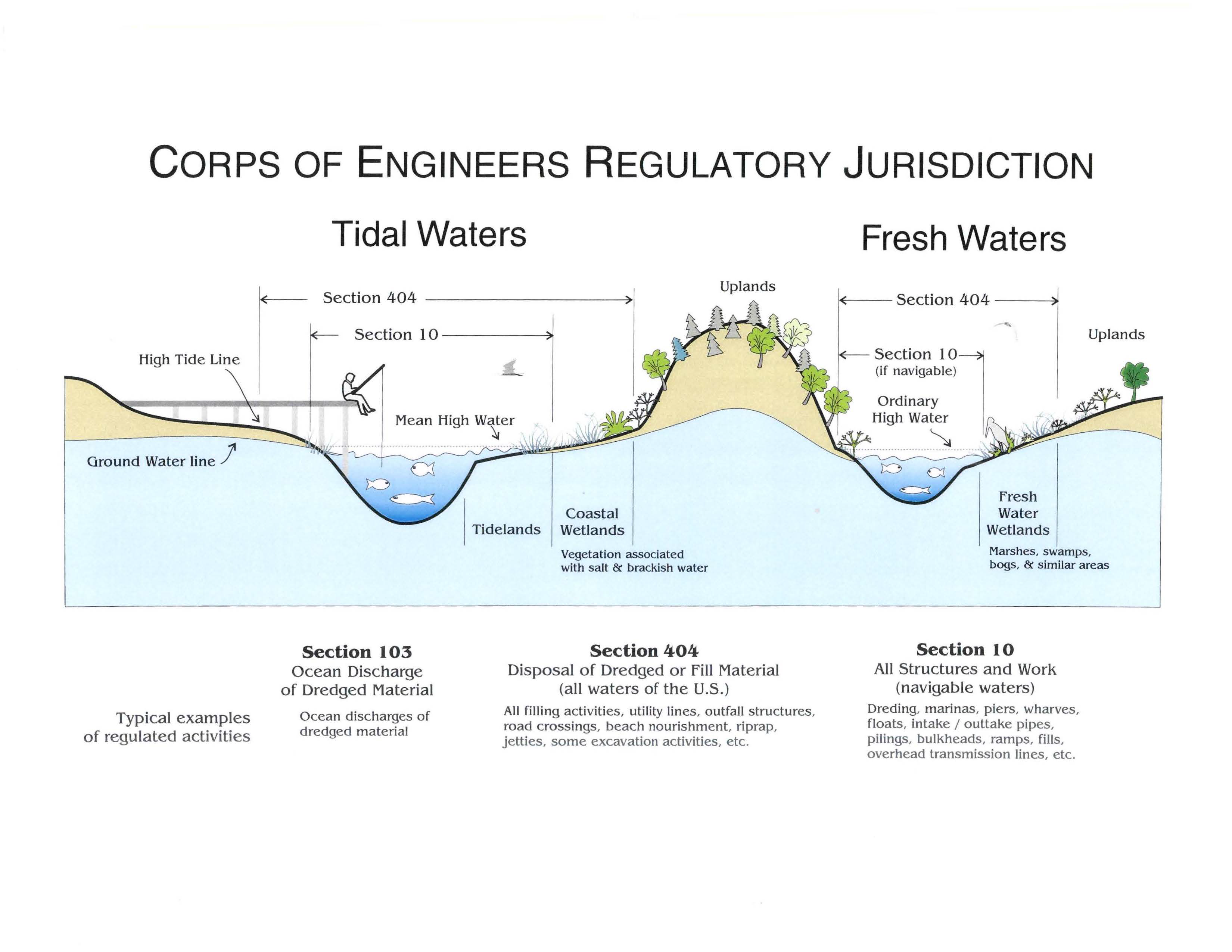Tribal Consultations and Resources for Tribes
Lead agencies must comply with AB52, which requires the lead agency to consider project effects on Tribal cultural resources and conduct consultation with California Native American Tribes early during the planning phase and prior to releasing a Mitigated Negative Declaration or Environmental Impact Report. The lead agency must give notice to California Native Tribes that have submitted a request for notice and that are traditionally and culturally affiliated with the geographic area of the project. AB52 does not apply to projects that are Categorically Exempt from CEQA as documented in a Notice of Exemption.
For more information and examples of notification to Tribes:
http://nahc.ca.gov/codes/
To identify which Tribe or Tribes should be notified contact:
The Native American Heritage Commission
1550 Harbor Blvd, Suite 100
West Sacramento, CA 95691
nahc@nahc.ca.gov
(916) 373-3710 • Fax: (916) 373-5471
You may also contact:
Sherri Norris
California Indian Environmental Alliance
NCRP Director of Tribal Engagement
sherri@cieawb.org
(510)848-2043
Resources for Tribes required to partner with a lead agency:
Important Forms and Resources
Following are important CEQA/NEPA forms and resorces that are discussed in further detail below.
This form can be used by public agencies to file an Exemption to CEQA if the project is eligible for an exemption.
This form can be used in the early stages of project development to identify potential environmental impacts and is part of the CEQA process.
This form is helpful in understanding additional federal environmental law compliance that may apply to your project. This form was developed for the Safe Drinking Water SRF Program, but highlights the Federal Acts projects will need to comply with.
Other Resources:
Since external resources are not managed by NCRP, the links provided may become broken without notice. Please report broken links to NCRP by e-mailing kledhill@westcoastwatershed.com
Statutory and Categorical Exemptions
Many water and wastewater projects may qualify for either a Statutory or Categorical Exemption.
STATUTORY EXEMPTIONS
Statutory exemptions from CEQA are granted by the State Legislature. These exemptions take several forms. Some statutory exemptions are complete exemptions from CEQA and other exemptions apply to only part of the requirements for CEQA.
Statutory exemptions that can apply to water and wastewater projects include an exemption for Feasibility and Planning Studies (CEQA Guidelines §15262). This exemption covers a project involving only feasibility or planning studies needed for possible future action which an agency, board, or commission has not approved, adopted, or funded.
The regulations include an exemption for Emergency Projects (CEQA Guidelines §15269[a]). The scope of an emergency is narrowly defined as a project to maintain, repair, restore, demolish, or replace property or facilities damaged or destroyed as a result of a disaster in a disaster stricken area in which a state of emergency has been proclaimed by the Governor pursuant to the California Emergency Services Act. The exemption covers the emergency repairs (CEQA Guidelines §15269[b]) to publicly or privately owned serviced facilities necessary to maintain service essential to public health, safety, or welfare.
The exemption also covers specific actions necessary to prevent or mitigate an emergency (CEQA Guidelines §15269[c]). This exemption does not include long-term projects undertaken for the purpose of preventing or mitigating a situation that has a low probability of occurrence in the short-term.
CEQA also includes a statutory exemption for the installation of a pipeline that is less than one mile long constructed in a public right-of-way (CEQA Guidelines §15282[k]). The exemption also covers the maintenance, repair, restoration, removal, or demolition of an existing pipeline as long as the pipeline does not exceed one mile in length.
CATEGORICAL EXEMPTIONS
The Public Resources Code requires the CEQA guidelines to include a list of classes of projects which have been determined to not have a significant effect on the environment and which are therefore determined exempt from the provisions of CEQA. The following is a list of exemption classes commonly used for water and wastewater infrastructure projects. Projects meeting these classifications are declared categorically exempt from the requirement for preparation of environmental documentation. Although these projects may be exempt from the preparation of an environmental document, the Lead Agency is not exempt from environmental review to confirm that the project would not result in a significant impact. Additionally, the Lead Agency is not exempt from providing supporting documentation for federal coordination with federally-funded or partially federally-funded project (i.e. State Revolving Loans).
Existing Facilities (CEQA Guidelines §15301)
Class 1 exemptions consist of the operation, repair, maintenance, permitting, leasing, licensing, or minor alteration of existing public or private structures, facilities, or mechanical equipment, involving negligible or no expansion of use beyond that existing at the time of the lead agency’s determination that the project was exempt. The key in use of this exemption is the negligible or no expansion of an existing use.
Class 1 exemptions include projects such as existing facilities used to provide electric power, natural gas, water and sewer service, and other public utility services. The following actions generally qualify for this exemption, though the list is not exhaustive:
- The addition, deletion, or modification of mechanical controls, electrical controls, and hydraulic controls for water treatment units, water supply systems, and pump stations;
- Maintenance, repair, replacement, or reconstruction to any water treatment project units including structure, filters, pumps, and chlorinators;
- Maintenance of existing landscaping, native growth, and water supply reservoirs (excluding the use of pesticides as defined in Section 12753 Division 7, Chapter 2 of the Food and Agricultural Code);
- Minor repair and alterations of existing dams and appurtenant structures under the supervision of the Department of Water Resources or in officially mapped areas of severe geologic hazard.
Replacement or Reconstruction (CEQA Guidelines §15302)
Class 2 exemptions consist of replacement or reconstruction of existing structures and facilities where the new structure will be located on the same site as the structure replaced and will have substantially the same purpose and capacity as the structure replaced. The key in use of this exemption is that the replacement or reconstruction occurs at or very near the same site and negligible or no expansion of capacity.
Class 2 exemptions include projects such as the following, though this is not an exhaustive list:
- Repair or replacement of water service connections, meters, or valves;
- Replacement or reconstruction of existing water supply distribution lines of substantially the same size;
- Replacement or reconstruction of storage tanks and reservoirs of substantially the same size;
- Replacement or reconstruction of water wells of substantially the same capacity; and
- Replacement or reconstruction of pump stations and related appurtenances of substantially the same capacity.
New Construction or Conversion of Small Structures (CEQA Guidelines §15303)
Class 3 exemptions consist of construction and location of limited numbers of new, small facilities or structures; installation of small new equipment and facilities in small structures; and the conversion of small structures from one use to another where only minor modification are made in the exterior of the structure.
Examples of a new construction or conversion project include the following:
- Construction of new water supply or sewer service and distribution lines of less than sixteen inches in diameter and no greater than one mile in length, and related appurtenances;
- Construction of any water storage tanks and reservoirs of not greater than 100,000-gallon capacity;
- Construction of perimeter fencing around treatment plants and other buildings to deter unauthorized access if disturbed area does not exceed one acre; and
- Installation, operation, or permitting of hypochlorination units to inactivate bacterial contamination.
Minor Alterations of Land (CEQA Guidelines §15304)
Class 4 exemptions consist of minor public or private alterations in the condition of land, water, and/or vegetation which do not involve removal of healthy, mature, scenic trees. Class 4 exemptions are subject to the same exceptions as described above for the Class 3 exemption. Projects that commonly use Class 4 exemptions include:
- Minor alterations to land, water or vegetation on any officially existing designated wildlife management areas or fish production facilities for the purpose of reducing the environmental potential for nuisances or vector production;
- Any minor alterations to highway crossing for water supply or sewer service and distribution lines.
- Minor trenching and backfilling where the surface is restored; and
- Grading on land with a slope of less than 10 percent, except that grading is not exempt in a waterway, in any wetland, in an officially designated (by federal, state, or local government action) scenic area, or in an officially mapped areas of severe geologic hazard.
Information Collection (CEQA Guidelines §15306)
Class 6 exemptions consist of basic data collection, research, experimental management and resource evaluation activities which do not result in a serious or major disturbance to an environmental resource. These may be strictly for information gathering purposes, or as part of a study leading to an action which a public agency has not yet approved, adopted, or funded.
EXCEPTIONS
Class 3, 4, and 6 exemptions are subject to exceptions based on the location of the proposed project (CEQA Guidelines §15300, Exceptions). Projects located in a particularly sensitive environment may have a significant impact and would therefore not qualify for the use of an exemption. Class 3, 4, and 6 exemptions will apply in all instances, except where the project may impact an environmental resource of hazardous or critical concern where designated, precisely mapped, and officially adopted pursuant to law by federal, state or local agencies:
- Cumulative Impact – an exemption cannot be used when the cumulative impact of successive projects of the same type in the same place over time will produce significant effects on the environment;
- Significant Effect – a categorical exemption cannot be used for an activity where there is a reasonable possibility that the activity will have a significant effect on the environment due to unusual circumstances. An example would be that the proposed new construction is proposed within a wetland;
- Scenic Highway – a project is not exempt if it may result in damage to scenic resources within a highway officially designated as a state scenic highway;
- Hazardous Waste Sites – a new construction project is not exempt if it is located on a site which is included on any list compiled pursuant to Section 65962.5 of the Government Code; or
- Historical Resources – an exemption cannot be used for a new construction project that may cause substantial adverse change in the significance of a historical resource.
- Additional area sensitive locations or unusual circumstances that may make a project not exempt:
- Special status species habitat
- Critical Habitat for special-status species
- Unique habitat (e.g., wildlife refuge, deer wintering range, etc.)
- Important farmland
- Wild and Scenic Rivers
- Floodplains/Floodway
- Area of unique recreational facilities
- New or increased use of a critically depleted groundwater basin or groundwater basin subject to salinity intrusion
- Important mineral resources
- Production of significant amounts of solid wastes or litter
- Involves substantial new or increased emission of dust, ash, smoke, fumes, odors, or other pollutants
- Involves a substantial increase in noise or vibration levels beyond the property line
- Projects located near sensitive receptors
- Results in increased use or disposal of hazardous materials, flammables, or explosive
- Project located in an area officially mapped geologic hazard area
- Involves substantial change in the demand for municipal services
- Involves traffic impacts in an area with traffic problems
- Involves a substantial increase in fuel consumption (electricity, oil, natural gas)
CEQA Documents
When a project does not meet the requirements for an exemption, then a CEQA document must be prepared. These documents all begin with completion of an initial study to determine the potential environmental impact and to identify reasonable and feasible mitigation measures that may reduce impacts.
A Negative Declaration must be prepared for a project which will not have a significant effect. A Mitigated Negative Declaration shall be prepared if the Initial Study identified potentially significant effects, but revisions in the project or mitigation measures would avoid or reduce the effects to a point where no significant effects would occur (CEQA Guidelines, §15070).
The Negative Declaration is a document which consists of a brief project description, the location of the project, a description of mitigation measures (if any) included in the project to avoid potentially significant effects, an Initial Study, and a formal finding stating that the project will not have a significant adverse effect (CEQA Guidelines, §15071). If the Initial Study leads to the finding that a significant adverse effect may occur, then an EIR must be prepared.
INITIAL STUDY
The Initial Study facilitates: (1) identification of environmental impacts; (2) an assessment of environmental impact early in project design; (3) project modifications to avoid or mitigate adverse impacts; and (4) factual documentation for a finding, if appropriate, that the project will not have a significant adverse effect on the environment (CEQA Guidelines, §15063).
The CEQA Guidelines do not specify the precise format for an Initial Study. However, the Initial Study must contain the following specific elements in written form: (1) a description of the project, including its location; (2) the environmental setting; (3) environmental effects by use of a check list, (4) a commitment to mitigate adverse effects, if any, to insignificance; (5) an examination of whether the project is compatible with existing zoning and plans; and (6) the name of the person or persons who prepared or participated in the Initial Study (CEQA Guidelines, § 15063(d) and Appendix G).
Maps, photos, drawings, or explanatory material should be attached to provide a better understanding of the project. The Initial Study must be in sufficient detail to describe adequately the probable effect of the project on the affected area.
NEGATIVE DECLARATIONS OR MITIGATED NEGATIVE DECLARATION
Once the negative declaration is signed, the lead agency prepares 15 copies for transmittal to the State Clearinghouse (SCH) and additional copies for other local agencies and interested public. The SCH distributes the copies of the proposed Negative Declaration to provide an opportunity for federal, state, and local agencies, and members of the public to respond to the findings. The public review period is at least 30 days to provide interested parties with sufficient time to respond to the proposed finding before the Negative Declaration is approved (CEQA Guidelines, Sections 15072-15073).
Notice of Intent to Adopt a Negative Declaration or Mitigated Negative Declaration
The lead agency is responsible for providing public notice that a proposed Negative Declaration has been prepared and is out for public review (PRC, Section 21092). Contents of the notice are specified in CEQA Guidelines, § 15072(f). All organizations and individuals who have previously requested such notice shall be notified of the proposed Negative Declaration and notice shall also be given by at least one of the following procedures:
- Publication at least once in a newspaper of general circulation in the area affected by the proposed project
- Posting of the notice on and off-site in the area where the project is to be located.
- Direct mailing to owners of property contiguous to the project.
Any public or private parties who may be affected by the project should be notified. At the end of the 30-day public review period, prior to approving the project, the lead agency must consider the proposed Negative Declaration together with any comments received during the public review process and shall decide whether to adopt the Negative Declaration (CEQA Guidelines, §15074).
NOTICE OF DETERMINATION
After deciding to carry out or approve a project, the lead agency files a notice of Determination with State Clearinghouse (SCH). The filing of the Notice of Determination with SCH starts a 30-day statute of limitations on court challenges to approval under CEQA (CEQA Guidelines, § 15075). At the time of filing, the lead agency must have a copy of the Notice of Determination, the proposed Negative Declaration, and all comments with the agency’s responses, on file and available to the public.
ENVIRONMENTAL IMPACT REPORT
The decision to prepare an EIR should be made at the conclusion of the Initial Study. An EIR should be prepared if there is substantial evidence that the project may have a significant effect on the environment. The determination of whether a project may have a significant effect on the environment calls for careful judgment, based to the extent possible on scientific and factual data. In cases where it is not clear whether there is substantial evidence that a project may have a significant effect on the environment, an EIR should be prepared when there is serious public controversy concerning the environmental effect of a project (CEQA Guidelines, § 15064).
When any of the following conditions occur the lead agency shall find that a project may have a significant effect on the environment which will require a Mandatory Finding of Significance. Such a finding shall require an EIR to be prepared (CEQA Guidelines Section 15065):
- When a project has the potential to substantially degrade the quality of the environment, substantially reduce the habitat of a fish or wildlife species, cause a fish or wildlife population to drop below self-sustaining levels, threaten to eliminate a plant or animal community, reduce the number or restrict the range of an endangered, rare or threatened species, or eliminate important examples of the major periods of California history or prehistory;
- When a project has possible environmental effects which are individually limited but cumulatively considerable;
- When the environmental effects of a project will cause substantial adverse effects on human beings, either directly or indirectly.
The general process for the preparation and adoption of an EIR is described in the CEQA Guidelines in Sections 15080 – 15112. The contents of an EIR are described in CEQA Guidelines Sections 15120 – 15132. EIR preparation consists of the following basic steps:
- Decision to prepare an EIR (CEQA Guidelines, Section 15065 and 15081).
- Early consultation (CEQA Guidelines, Section 15083).
- Send Notice of Preparation to the SCH with a distribution list (CEQA Guidelines, Section 15082).
- Prepare Draft EIR and send 15 copies with Notice of Completion to SCH for filing as stated in CEQA Guidelines, Section 15085. That starts the 45 day public review period (CEQA Guidelines, Section 15105).
- The lead agency must provide public notice of its intent to adopt a draft EIR prior to making that determination (PRC Section 21092, and CEQA Guidelines, Section 15087).
- Respond to comments received (CEQA Guidelines, Section 15088).
- Prepare and certify Final EIR (CEQA Guidelines, Section 15089_15090).
- Make decision to approve or disapprove the project (CEQA Guidelines, Section 15092).
- File Notice of Determination (CEQA Guidelines, Section 15094).
The contents of an EIR are specified beginning with Section 15120 of the CEQA Guidelines.
The lead agency submits 15 copies to the State Clearinghouse to provide an opportunity for federal, State, and local agencies, and members of the public to respond to the findings. The public review period is at least 45 days to provide interested parties with sufficient time to respond to the proposed finding before the EIR is approved.
The lead agency provides public notice of the intent to adopt a draft EIR per CEQA Guidelines, Section 15087. The minimum review period between release of the Draft EIR and final date for receipt of comments is 45 days, unless a shorter date is approved by the SCH (CEQA Guidelines, Section 15105 and 15111).
The Draft EIR is included as part of the review and approval process whenever a public hearing is held on the project. The lead agency evaluates the significance of comments received on the Draft EIR and responds in the Final EIR to those comments found to raise significant environmental issues.
The Final EIR is certified (CEQA Guidelines, Section 15092) and then the project can be approved.
Within 5 days of the decision on the project, the lead agency files a Notice of Determination and record of project decision (CEQA Guidelines, Section 15094) and when appropriate, a Statement of Overriding Considerations (CEQA Guidelines, Section 15093).
Federal Cross-Cutting
Cross-cutting federal authorities are the requirements of other federal laws and Executive Orders that apply in federal financial assistance programs. In the SRF programs, these include environmental laws such as the Endangered Species Act, the National Historic Preservation Act and executive orders on the protection of wetlands and flood plains, social policy authorities such as executive orders on equal employment opportunity in federally assisted programs, and economic authorities such as rules implementing executive orders on the debarment and suspension of persons who have engaged in misconduct. The State is responsible for ensuring compliance with federal laws as administrator of the EPA funds.
Cross-cutting federal authorities apply to projects and activities receiving assistance under the Clean Water State Revolving Fund (CWSRF) program authorized by Title VI of the Clean Water Act and the Drinking Water State Revolving Fund (DWSRF) program authorized by section 1452 of the Safe Drinking Water Act (together, the SRF programs). The basic rules for complying with cross-cutting federal authorities in the two programs are set-out in the CWSRF regulations at 40 C.F.R. § 35.3145 and in the DWSRF regulations at 40 C.F.R. § 35.3575.
Timeline for CEQA/NEPA
If a project requires CEQA compliance, the timeline can vary from one month to over a year. A Categorical Exemption (CE) can typically be completed in a month or less and do not usually require special studies. An initial Study/ Mitigated Negative Declaration (IS/ MND) typically requires field studies, many of which are seasonally dependent. An Environmental Impact Report (EIR) will require detailed special studies, which can take six months to over a year to complete and the document will typically take nine months to over eighteen months to complete including certification.
Status Information
The State Clearinghouse distributes CEQA environmental documents and provides status information. The California Environmental Resource Evaluation System (CERES) provides the CEQA statutes and Guidelines, case law, and information on the CEQA process.
The National Environmental Policy Act (NEPA) does the same for projects that need approval by federal agencies. The Department of Water Resources has determined that projects financed through state bond funding that occur on or overlap federal or Tribal lands are required to complete a NEPA/CEQA hybrid document.




